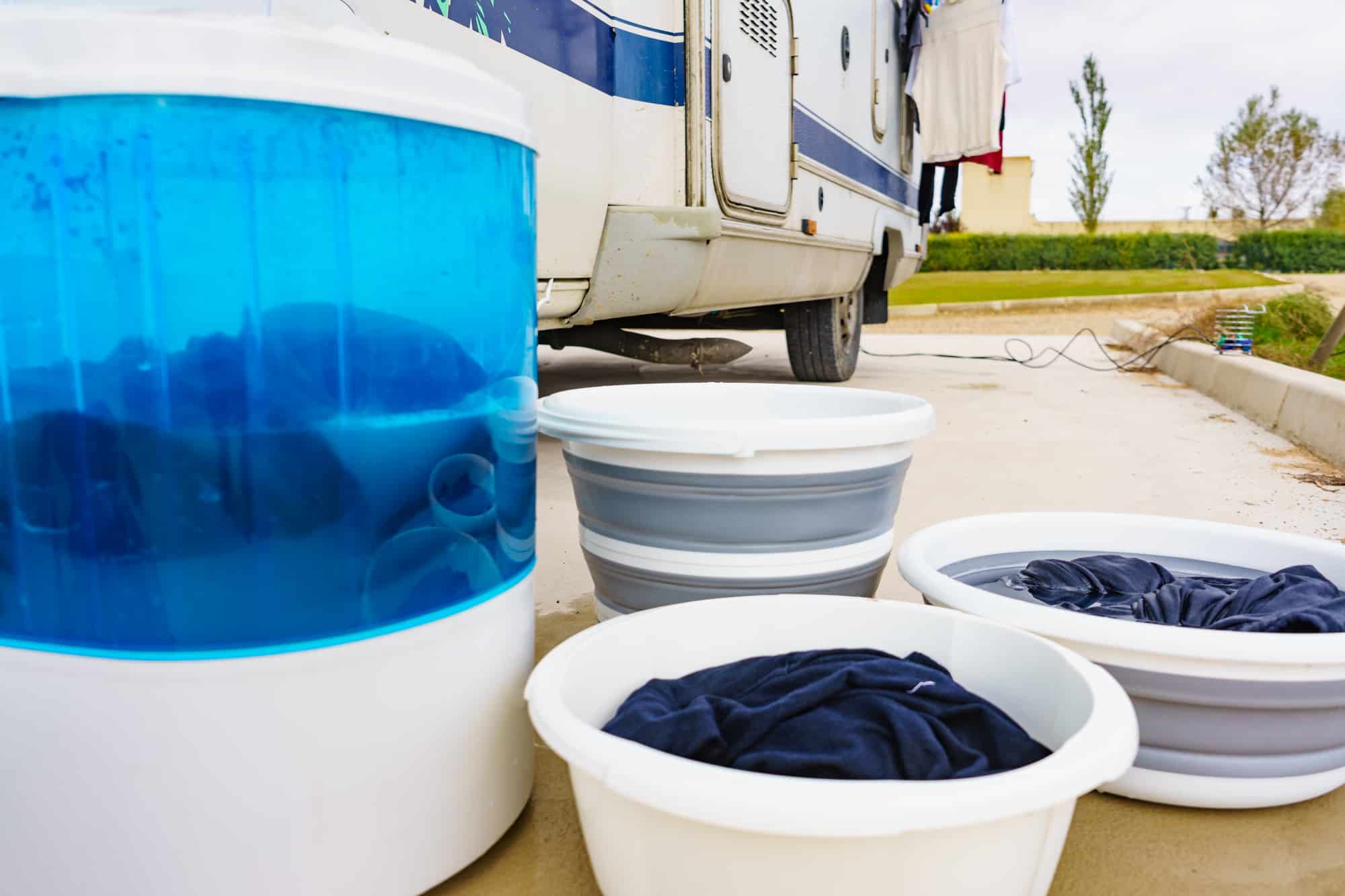Washing machines are one of the most convenient appliances in the home, saving time and energy by doing the nitty-gritty work of cleaning clothes. However, they consume loads of water, leading to the accumulation of wastewater that needs to be drained somewhere.
While the standard installation for a washing machine is to have the drain hose go into a floor drain, is it legal to run the washing machine drain outside?
Running a washing machine drain outside is illegal in most states — including New York, North Carolina, and Arkansas — due to the potential health hazards.
When wastewater seeps into the ground, it contaminates the soil and groundwater, causing severe health problems. Fines can go above $50,000.
If you’re considering running your washing machine drain outside, it’s best to consult with a professional plumber to determine if it’s feasible and legal in your area.
Read on to learn more about the dangers of discharging wastewater outdoors and what you can do to properly drain your washing machine outside.
Is It Illegal To Drain a Washing Machine Outside?
It is illegal to drain a washing machine outside in states like New York, Tennessee, and Alabama. Since wastewater can contain harmful bacteria and pollutants, it must be properly drained to avoid contaminating the soil and groundwater.
Depending on the type of laundry detergent you use in your washing machine, its wastewater can be hazardous. Sodium-based detergents are harmful to the environment, and draining them in your yard can potentially kill plants and grass.
While greywater and phosphorus-based detergents might benefit plant life, they can still pollute groundwater (source: ScienceDirect).
Before installing an outside drain for your washing machine, check with your local municipality, HOA, and land regulations to see if it’s against the law. There are hefty fines and penalties associated with discharging wastewater illegally, so it’s always best to err on the side of caution.
Here are a few states where it’s illegal to run a washing machine drain outside:
- New York
- Tennessee
- Arizona
- North Carolina
- Arkansas
- Alabama
- Oregon
- Nevada
- Nebraska (source: University of Nebraska-Lincoln)
- Utah
- Montana
- Wyoming
- Colorado
In states like California, water recycling is encouraged to help preserve this valuable resource. Most of the recycled water is used in sump pits to eliminate any dirt and debris before it’s discharged into a sewer system.
However, homeowners must follow state and local regulations before installing a greywater system (source: California Greywater Regulations).
How To Drain a Washing Machine Outside
Although running a washing drain outside is technically illegal in most states, there are several ways to do it without harming the environment. If you live in an area with permissive laws or plan on discharging wastewater into a greywater system, here are some tips for doing it efficiently:
1. Lay Out a Plan
Since the plumbing setup of washing machines differs depending on the model you have, you need to develop a plan that accommodates your specific needs. You need to ask questions like:
- Where will the drain go, and how will it be routed?
- Will it run along the side of the house or underground?
- How will it connect to the existing drainage system?
As with any plumbing project, you must decide where the water will go and map out the route to get there. This is especially important if you’re running the washing machine drain hose through an existing window or door. You don’t want water leakage into your home causing extensive damage.
There are several ways you can use to drain your washing machine outside:

Use a Big Barrel
If you don’t have an existing drainage system, consider using a large barrel to collect the wastewater. Washing machines have a discharge hose that can easily connect to a barrel with a standard garden hose.
Just make sure the barrel is big enough to accommodate the amount of water your washing machine produces.
Using a watering can, you can use the collected water to water your plants or lawn. Since most washing machines use around 41 gallons (155 L) of water, choose a barrel that can hold at least this much (source: National Park Service).
Route It to Your Irrigation System
If you have an existing irrigation system, you can route the discharge hose from your washing machine to the existing drainage pipes. This is a relatively easy and stress-free way to get rid of wastewater without worrying about it backing up into your home.
You can direct the greywater to your home garden, lawn, or other landscaping features.
Use a Hose Pipe
You can also divert the wastewater from your washing machine to the outside using a hose pipe. This is a viable option if you live in an apartment or don’t have an existing drainage system.
Simply attach one end of the hose to the washing machine’s discharge port and route it to a nearby drain or gutter. Make sure the hose is long enough so it doesn’t kink or leak.
2. Research Local Regulations
Even if you’re using a barrel or hose pipe to discharge wastewater, it’s essential to research your state and local regulations. Some states have restrictions on how much greywater you can discharge and what type of soaps and detergents you can use.
These regulations are in place to protect the environment and ensure that greywater is being used safely. You also need to do extensive research on all the materials you need depending on how you want to route your washing machine drain.
For example, if you want to go the underground route, you need to use PVC pipes that are durable and can withstand the weight of the soil. Routing to an existing drainage system will require a 1-inch (2.54 cm) hose to funnel the greywater to the main drain pipe.

3. Install a Backflow Preventer
If you’re discharging wastewater into an existing drainage system, you need to install a backflow preventer. As its name suggests, this device prevents wastewater from flowing back into your home in case of a power outage or a clog in the system.
Backflow preventers are relatively easy to install and are available at most hardware stores.
For example, you can buy the Minimprover Internal Backwater Valve, 2-F 2″ Float Model Flood-Guard (available on Amazon.com).
It’s made of material that won’t corrode easily, so you won’t have to worry about frequently replacing it or contaminating your water supply. All you need to install it is a screwdriver.
4. Test the System
Once you’ve installed the backflow preventer, it’s time to test the system. Turn on your washing machine and let it run for a few minutes.
The wastewater should flow out of the water discharge hose and into the drainage system if everything is working correctly. If you notice any leaks or backups, fix them immediately.
5. Consult With a Professional
Installing a washing machine drain outside can be complicated and risky. If you’re not sure how to do it, it’s always best to consult with a professional. Licensed plumbers are knowledgeable about the best way to route your washing machine drain and ensure it’s installed properly.
They’re also at par with the latest local regulations, so you can be sure your washing machine drainage system is compliant.
Running a washing machine drain outside is a great way to save water and reduce your home’s impact on the environment.
However, it’s essential to research your state and local regulations before doing it, and if you’re not sure how to safely run your washing machine drain, you should consult a knowledgeable professional about the matter.










